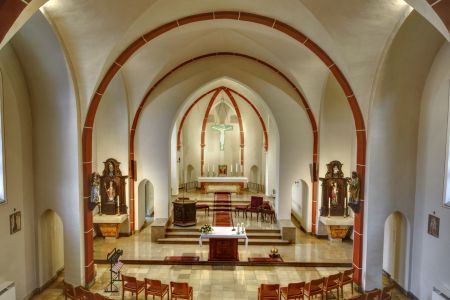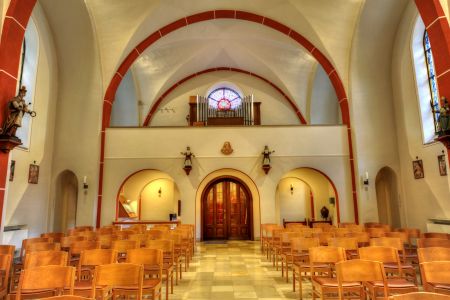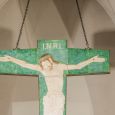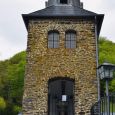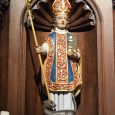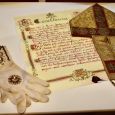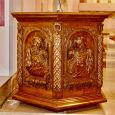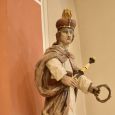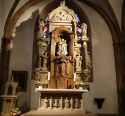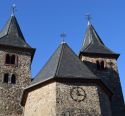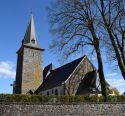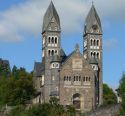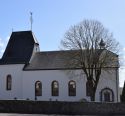Church | | Neogothic | Catholic Church


Map
Opening hours
01 June - 30 September
Mon 10.00 - 18.00
Tue 10.00 - 18.00
Wed 10.00 - 18.00
Thu 10.00 - 18.00
Fri 10.00 - 18.00
Sat 10.00 - 18.00
Sun 10.00 - 18.00
01 October - 31 May
Mon
Tue
Wed
Thu
Fri
Sat 14.00 - 17.00
Sun 14.00 - 17.00
19 December - 16 January
Mon 10.00 - 17.00
Tue 10.00 - 17.00
Wed 10.00 - 17.00
Thu 10.00 - 17.00
Fri 10.00 - 17.00
Sat 10.00 - 17.00
Sun 10.00 - 17.00
Description
Next to it is the neo-Gothic church built in 1885, which was the parish church for the villages of Stolzemburg and Pütscheid until 2017. It was renovated in 1955 and extended by a two-tiered campanile with a simple cross.
The monumentally shaped entrance conceals a portal supported by two columns, on which Christ is depicted with St. Abbot Odo and St. Bishop Elegius. The Gothic choir with cross ribs still dates from the earlier church. Both the nave and the choir are surrounded by a concise ambulatory.
Photos
Remarkable elements
The ceramic works
In the centre of the apse, an impressive hanging cross shines out in the green colour of hope, on which hangs Jesus Christ with white loincloth, arms stretched out wide, his thorn-crowned head bowed. On the colourful tabernacle door below, Jesus encounters the Samaritan woman at Jacob's well. A depiction of the Last Supper, created with massive character heads from the locality, adorns the front of the altar, which was created in 1955. All the ceramics, including the ceramic reliefs of the Stations of the Cross, were made by Leo Nosbusch (1897-1979) from Pütscheid.
The Pankratius Tower
To the left of the staircase leading to the church is the old massive tower from the church of 1761, with a neo-Gothic baptismal font inside and a gravestone of the priest Franz Kalbusch, who died in Stolzemburg in 1832.
The statue of St. Odo
On the baroque left side altar is the statue of St. Pancras and in the middle that of St. Odo, the main patron. He was the 2nd abbot of the reform monastery of Cluny (+942) and the author of liturgical hymns, which is why he is also considered the patron saint of church music. It is polychromed, he is depicted as an abbot in liturgical dress with staff and mitre. In his left hand he holds a book, his main work, the "occupatio" and at his feet crouches an animal, which is perhaps a tame wolf from a legend.
Memories of Bishop Mangers
On the right side of the main staircase outside is a memorial stone with a picture of the Bishop of Oslo, Msgr. Jacques Mangers (1889-1972), who came from Stolzemburg. A display case inside shows his liturgical garments, coat of arms and documents.
The Baroque Preaching Chair
To the left in the choir room stands the baroque, richly decorated ambo with striking reliefs of the four evangelists Matthew, Mark, Luke and John with their respective attributes, man, lion, bull and eagle.
The statue of St. King Louis IX.
On a buttress arch is the statue of St. King Louis IX of France, who died in 1270 on the 7th Crusade in Carthage in North Africa. He is dressed plainly as a crusader. On his head he wears a crown, in his right hand he holds a kind of sceptre or scourge and in his left the crown of thorns of Christ, which he brought to Paris and for which he built the Sainte Chapelle.




